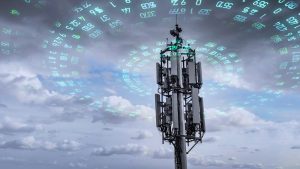Pilots in the United States Air Force Use Artificial Intelligence to Help Them Develop Flight Crews

The difficult task of staffing C-17 freight flights is being made easier thanks to a tool established by the Dept of Air Force and the MIT AI Acceleration.
Consider this from Capt Kyle McAlpin of the United States Air Services, who believes that arranging C-17 jet crews is cognitive torture. McAlpin is an outstanding C-17 pilot as well as an artificial intelligence flying chief officer for the Dept of Air Force MIT AI Expansion Plan. He claims that one may have a purposed shift and devote the ensuing 12 hrs of their lifespan rejuvenation to a workable schedule.
It’s a troublesome issue for the 52-strong team that works with C-17s, the strategic transport planes that carry personnel and equipment all over the globe. The Air Force assessed 4 million hours of flight time for the one C-17 armadas in the year, which includes 275 US and allied planes. Through and vast, each trip necessitates the registration of a party of 6 individuals, although squad necessities contrast at the mercy of the operation.
Talking to the Captain. Ronisha, a Cyber – related Management spokesperson and the vital airman in an exploratory research collective spanning the Dept of the Air Force, the MIT Dept of Aerospace engineering, and MIT Lincoln Research lab, becoming a routing protocol is an additional responsibility on the pinnacle of an aviator’s nominated occupation, including being a navigator. All that is required is aimed at a planner to pull the trigger, and the finest calendar will be created.
To realize that objective, the assisting in the development with its Air Force Company’s work, Tron, to develop an AI-powered interface for the prevailing C-17 ticketing system. The business component, which was established as a fragment of the DAF-MIT AI Incubator initiative, automates C-17 aircrew scheduling and optimizes group resources.
About 7,600 pilots are prepared to practice the expertise the minute it is implemented in the middle of the year. It’s now being integrated with Puckboard, the development software that C-17 pilots use to put together schedules 14 days before the date. Leading up to the release of Puckboard around 2019, teams had already been designing strategies on smartboards on ledger sheets.
According to Michael Snyder, a software engineer, and manager in the AI Software Frameworks and Optimization techniques Band at MIT Lincoln Lab, whereas Puckboard was a noticeable difference over pens and paper, it lacked the frequently selected progression estimations to help coordinators avoid the cognitively draining components of the assessment.
When putting together the schedules, the pilots have a lot to think about. When does air space become available? Considering the rest requirements, preparations, and vacations, who is available to fly? Who is elected from among the available operators? For example, just several airmen might not have been available for late-night flights or air replenishing. The planner is also responsible for booking working out journeys to maintain flyers certified.




